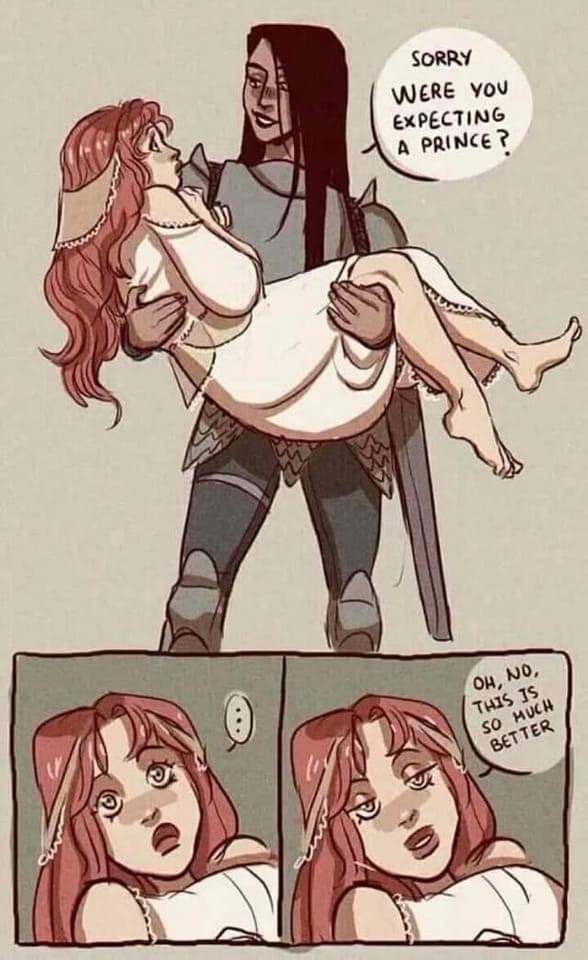|
 The Doodler THE KILLER
The Doodler, also known as the Black Doodler, was a gay serial killer active in the San Francisco area during 1974-1975. He killed at least six men and attempted to kill at least three others. The toll may be much higher. The man suspected of being the Doodler is still alive and living in San Francisco. The SFPD identified him as a person of interest, but don’t have enough evidence to charge him with a crime. Three survivors of his attack refused to identify him or talk to police. It was easier for them to almost die and risk others getting stabbed to death than ruin their lives and careers by coming out.
The Doodler got his nickname by his habit of sketching his victims prior to having sex and killing them. Based on one victim’s description, the Doodler was a black man, 19-25 years old, very lanky and around six feet tall. He often wore “a Navy-time watch cap.” He may have been an art student – he told one of the survivors he was “studying commercial art.”
The Doodler’s approach was to go to a gay nightclub or bar, sketch his chosen victim and use his sketch as a pick-up line. He would suggest they go somewhere private or isolated for sex. He would stab the man to death sometime during the sexual encounter. The Doodler left his sketches at the crime scene, although the police never released any of the sketches to the public.
No one knows exactly why the Doodler started killing in January 1974 or why he stopped in June 1975. The police believed that he had “mental difficulties involving sex,” or “sexual identification problems.” According to the San Francisco Chronicle, the Doodler told each victim: “All you guys are alike,” by which he meant gay. Detectives believe that the Doodler was a self-hating gay man, who killed during or after sex as a way of dealing with his own homosexual desires.
THE VICTIMS
The victims were white gay men, 27-66, that the Doodler picked up in bars and clubs for a sexual encounter. Each victim was stabbed or beaten to death. Most of the violence went well beyond what was needed to kill each man.
 Gerald Cavanaugh VICTIM #1 – Gerald Cavanaugh, 49.
Gerald Cavanaugh’s body was discovered at 1:57 am on January 27, 1974. He was lying at the edge of the water at Ocean Beach. He had been stabbed 16 times. A cut on his left hand indicated a defensive wound. Cavanaugh wore underwear, shoes, socks, pants, a shirt, a jacket, and a Timex watch. He had $21.12 in his pocket. He worked in a mattress factory. He was 5’ 8” and weighed 220 pounds. Cavanaugh was Catholic. “Never married,” noted the coroner.
Cavanaugh was born in Montreal, Quebec, Canada on March 2, 1923. He left home young and did a 21-month hitch with the US Army in World War II. He ended up in the Haight-Asbury section of San Francisco in the 1970s, to take advantage of the sexual freedom there and in the nearby Castro. He was not out to his family. He went home once a year to visit his mother until she died in 1967. After that, he never went back.
Police records show that Cavanaugh had been stopped by police, suspected of having sex in men’s restrooms near the foot of Ulloa Street at Ocean Beach. His body was found in the sand a short distance away. The anonymous call that tipped police to Cavanaugh’s body came from a pay phone at those restrooms.
His sister came from Canada to identify his body, but no one took Gerald Cavanaugh home after his murder. He lies under a weathered gravestone in the Holy Cross Cemetery in Colma, California, about 12 miles south of San Francisco.
 Jae Stevens VICTIM #2 – Joseph “Jae” Stevens, 27
Early in the morning of June 25, 1974, Jae’s body was discovered by a woman walking her dog. He was in the bushes by Spreckels Lake in Golden Gate Park, close to his car. He had been stabbed three times and there was blood in his nose and mouth. Joseph Stevens had been born in Texas but moved to San Francisco in his late teens. Stevens performed as “Jae,” a female impersonator at Finocchio’s, a nightclub in San Francisco. He was originally brought in as a replacement act but proved to be so popular that he quickly moved into gay stand-up comedy. One of his sisters described him as “Very, very talented. And again, gorgeous. Oh, my, we had such fun together, making up little shows while he was growing up and then later in clubs. I mean, he was a fantastic actor. And, oh, could he sing.”
Three months after his death, another sister, Alma Teresa Stevens, thought evil spirits had emerged from his murder. She killed their mother and burned her in the family fireplace. She attacked another sister and tried to kill her. The sister survived, but Alma ended up in an institution for the criminally insane. The people who purchased the family home said the mother haunts the house, but she is a friendly ghost. They talk to her and ask her to watch the house while they are away.
 Klaus Christmann VICTIM #3 – Klaus A. Christmann, 31
Klaus or Claus Christmann, a German national, was last seen alive at Bojangles, a gay dance club in the Tenderloin district. He had been visiting friends in San Francisco for three months. His wife and two children remained in Germany. According to the coroner, “The deceased’s pants were unzipped and open,” supporting investigators’ theory that Christmann and the Doodler had gone to a quiet, private area for sex.
A dog walker discovered his body early in the morning on Sunday, July 7, 1974. He lay near a street leading from Golden Gate Park to Ocean Beach. His throat was slashed in three places, and he had been stabbed 15 times. At his death, Christmann wore a tan leather jacket, “black side zipper ankle boots with brown Cuban-heels, a white Italian shirt, orange bikini briefs, one blue moonstone ring and one brown cameo ring along with a gold wedding band.” The coroner also noted he had a tube of face paint in his pocket, which led police to speculate that Christmann may have been working as a drag queen or female impersonator in secret.
 Frederick Capin VICTIM #4 – Frederick Elmer Capin, 32
Frederick Capin was from Washington State, a decorated Vietnam veteran working in San Francisco as a registered nurse. He had been a medical corpsman in the Navy and was the recipient of a medal for saving four men under fire in Vietnam. His body was found on May 12, 1975, by a hiker behind a sand dune between Vicente and Ulloa Streets in the Outer Sunset neighborhood of San Francisco.
Capin, six-feet-tall and a lithe 148 pounds, had been stabbed 16 times in upper left chest. Capin’s corduroy jacket and multi-colored “Picasso” shirt were blood-soaked, and there was dried blood smeared over his face, hands, and blue jeans. The marks in the sand leading to Capin indicated his body had been dragged about 20 feet.
VICTIM #5 – Harald Gullberg, 66
 Harld Gullberg Harald Gullberg was a sailor. He was born in Sweden in 1908 and became a naturalized American citizen on August 15, 1955. Half his teeth were gone and those remaining were rotted. Gullberg was a heavy drinker and was slowly dying from cirrhosis.
His body was found near Land’s End Trail by Lincoln Park Golf Course on June 4, 1975. Gullberg’s throat had been slashed. He had been dead about two weeks. Gullberg’s pants were unzipped, and he wore no boxers or briefs. He had $2.43 in his pocket. His face was eaten by maggots.
VICTIM #6 – Warren Andrews, 52
In January 2022, the San Francisco Police Department identified a sixth victim of the Doodler. Warren Andrews was a lawyer for the U.S. Postal Service. He lived in Millbrae, a suburb of San Francisco. Andrews was battered with a rock and branch and left for dead on the morning of April 27, 1975. His body was found in Land’s End park. His family flew him home to the Seattle area, where he lay in a coma until dying nearly two months later. A reporter tracked down Andrews’ sister. When asked if he was gay, she said, “I think he probably was…but back in those days, everybody was in the closet.”
 Warren Andrews THE SURVIVORS
Three men survived an attack by the Doodler. They saw his face, talked to him, may have even had sex with him. They were able to flee or get away before he killed them. The eyewitnesses described their attacker as a young, tall, slim black man.
SURVIVOR #1 – May 1975
A European diplomat met the Doodler in a restaurant “where he was having a midnight snack.” The Doodler asked the diplomat if he had any cocaine. They went back to the diplomat’s apartment, where the Doodler stabbed him six times. The diplomat denied they had “sexual relations.”
SURVIVOR #2 – July 1975
A “nationally known” entertainer took the Doodler back to his Fox Plaza apartment. The identity of this person has never been disclosed, although he might have been actor Rock Hudson or Richard Chamberlain, or singer Johnnie Ray. The identity of this survivor is one of the great mysteries of the case.
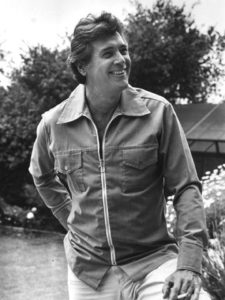 Rock Hudson SURVIVOR #3 – July 1975
The third survivor was a “well-known San Francisco figure” who left the city after the attack and refused to answer calls or letters and wouldn’t help the police in their investigation. The man had brought the Doodler back to his Fox Plaza apartment, which happened to be on the same floor as the first attack two weeks prior. The late Charles Lee Morris, owner and publisher of the Sentinel, a San Francisco gay weekly, told a story about a Los Angeles man who was about to go to bed with a young black man resembling the composite sketch of the Doodler, but changed his mind when a knife fell out of the man’s pocket.
THE SUSPECT
In January 1976, the San Francisco Chronicle ran a story about the Doodler and two days later a suspect was arrested. A man who resembled the composite sketch was taken into custody after he entered a Tenderloin bar and offered to draw the patrons. Along with a book of sketches, he’d been carrying a butcher knife. When he was brought in for questioning he denied assaulting or killing anyone; but became so enraged during an interrogation that he attacked one of the detectives.
The man was let go, and never charged, because none of the three survivors would testify against the man in court. It would mean coming out of the closet and being revealed as gay. Without their cooperation, police couldn’t build a case. Gay rights activist and politician, Harvey Milk, said, “I can understand their position. I respect the pressure society has put on them.”
In 1977, the San Francisco Sentinel reported that a local psychiatrist practicing in the East Bay area informed police that one of his patients confessed to being the Doodler. The psychiatrist said his patient was struggling with his own homosexuality and was killing in response to his own conflicted feelings. The psychiatrist has the surname “Priest,” or may have been a priest. His identity was lost.
San Francisco Police confirmed in 2019 that the man suspected of being the Doodler was alive and still considered a person of interest in the case. In the 47 years since the Doodler’s last murder, many of the officers involved in the case have died, although one of the survivors may still be living. Susan Stryker, the author of Gay by the Bay: A History of Queer Culture in the San Francisco Bay Area mentions the case briefly. “The only people I found who remembered the killings were trans women who lived in the Tenderloin at the time,” she said. “It is a very poorly-remembered episode in SF LGBT history.”
Were there other serial murders of gay men in the late 70s and 80s in other cities in California or gay urban centers? In the case of the younger men, Klaus Christmann in particular, my theory is the Doodler savaged men with whom he was strongly sexually attracted. The older men, Gerald Cavanaugh and Warren Andrews, may have been of the age or physical resemblance of a man or men who sexually abused or took advantage of him when he was younger. The choice of a knife as a killing weapon is strongly evocative of an erect penis. It enters a body and takes control. He stabbed at the heart.
San Francisco Chronicle reporter, Kevin Fagan, resurrected this notorious serial killer case through his podcast, The Doodler, produced in partnership with Ugly Duckling Films and Neon Hum Media. Maybe the murderer will confess? Maybe the police have enough DNA to prepare a case? Sadly, I don’t think either one will happen and the Doodler will die a free man. Who is he? A friendly neighbor? A respected elder? A recluse in a shabby apartment with a dog-eared sketchbook?
A healthy number of saints’ stories feature people who were “called to chastity” or to a relationship with Christ vs. marriage. All kinds of fantastic legends and tales ensued about the lengths to which these people would go to avoid marriage and connubial sex. Ultimately, they were all successful in their quest to avoid sex with members of the opposite sex. They ended up living alone (rarely) or with a same-sex companion (often) or same-sex community in a wilderness setting (usually).
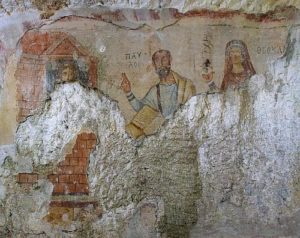 Thecla at her window listening to Paul St. Thecla the Evangelist is one of those saints. She would face anything but marriage.
Thecla’s story is preserved in the Acts of Paul and Thecla, an apocryphal story of Paul’s impact on a young virgin, Thecla, and her subsequent trials, adventures and spiritual leadership as his disciple. She infuriated many Church Fathers, including Tertullian, who griped that some Christians were using the example of Thecla to legitimize women’s roles in teaching and baptizing.
According to Acts, Thecla was a beautiful young woman of Iconium (now Konya, Turkey) whose life was transformed when she heard St. Paul preaching in the street beneath her window. She announced her intention to break off her engagement and to embrace a life of chastity. Her finance was furious. Her family was scandalized. They denounced her to the governor who had her arrested and condemned to death. Thecla was tied naked to a stake, but a miraculous thunderstorm put out the flames. She is saved. Once home, Thecla disguises herself as a youth and escapes to reunite with Paul and travel to Antioch.
While traveling, she is sexually assaulted by Alexander, a prominent man of Antioch. One account reads: “Repulsing the assault, she tears his cloak and knocks the wreath from his head. Alexander (the would-be ravisher) brings her before the magistrate who, despite the protests of the women of the city, again condemns Thecla to death, this time ad bestias. Pleading to remain a virgin until her death, she is taken in by ‘a certain rich queen, Tryphaena by name,” who lost her own daughter. (Tryphaena was the widow of Cotys, King of Thrace and a great-niece of the Emperor Claudius. In Romans 16:12, Paul sends greetings to a Tryphaena.)
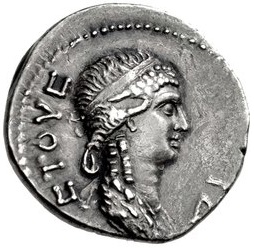 Queen Tryphaina Thecla is allowed to return to Tryshaena. She rides a lioness (who licks her feet) and is paraded through the city. The next morning, Alexander comes for her and escorts her to the arena to die. There she is stripped and thrown to wild beasts. A lioness (presumably the one who licked her feet) protects her from the attacks of lions, bulls and bears. Thecla prays, and throws herself into a trench of water (an euripus) and baptizes herself. The water is full of ferocious and hungry seals. A cloud of fire covers her nakedness and kills the vicious seals. The women in the stands of the arena cast fragrant nard and balsam into the area, which had a pacifying effect on the remaining wild animals. The awestruck governor releases Thecla and she returns to the palace of Queen Tryshaena. Refusing all entreaties to stay with the queen, Thecla dresses in male clothing and sets out to find Paul. She tells him that she baptized herself, and had been commissioned by Christ to baptize and preach in his name. According to the story, Paul recognized her as a fellow apostle and encouraged her to preach the Gospel. Wherever she went, “a bright cloud conducted her on her journey.”
Thecla encouraged women to live a life of chastity and to follow the word of God. She returned home to find her finance had died and her mother indifferent to her preaching. She left, and in one version of her story, she dwelt in a cave in Seleucia Cilicia (southern Turkey) for 72 years and formed a monastic community of women, whose members she instructed “in the oracles of God.”
In another version, Thecla passed the rest of her life in a rocky desert cave in the mountains near the town of Ma’aloula (Syria). She became a healer and performed many miracles. She remained persecuted, and men still conspired to rape and kill her. Just as she was about to be seized, Thecla cried out to God for help. A fissure opened in the stone walls of her cave and she disappeared. It is said that she went to Rome and lay down beside Paul’s tomb.
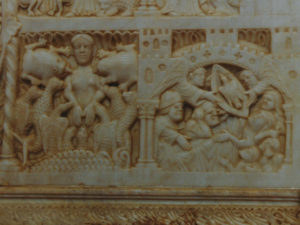 Thecla and animals Her cave became an important pilgrimage site in early and medieval Christianity. Today visitors can still see Thecla’s cave and the spring that provided water for her. The nuns who live at the Mar Thecla monastery will tell you her story and show you the opening in the rock where the saint escaped.
There are many wonderful parts of St. Thecla’s story, beginning with her determination to live her life following her calling to evangelize, rather than accede to family or societal expectations. Her protection by animals, the public affirmation by groups of women, are also very positive. She was unashamed of her nakedness when she was led twice to the arena to die. She was proud of her body, her virginity, and her sole possession of it. The biggest surprise was her encouragement by St. Paul ( wives-be-subordinate-to-your-husbands), accepting her as a fellow apostle. The ugly, horrifying constant throughout her life is the desire by men to rape Thecla or kill her if she won’t submit to their authority. Men who are rapists do not believe that they are the problem–females (or males) who aroused them are at fault. What can Christianity do to change this perception?
“Charlotte Mew: Madness and Sapphic Desire,” by Rebecca Batley introduced me to this slightly mad, brilliant, and reclusive poet. Almost immediately she reminded of some closeted Catholic lesbians that I have met. These women longed for love and sex but were fearful of acting on their desire. They were afraid of losing their respectability; and the tension between their religious faith and sexual need filled them with dread and a sense of loss. No wonder they were a little unhinged. Deeply closeted women often don’t read signs well, and can fixate on women who aren’t interested in them. This results in a predictable rejection. 
Charlotte “Lotti” Mary Mew was born on November 15, 1869, in London, England. Several of Mew’s siblings suffered from mental illness and were committed to mental institutions. This scared Charlotte and her remaining sister Anne, so much that they made a pact never to marry. In 1898, their father died without leaving any money for the family. This forced the Mews to rent out part of their home, and Charlotte took a job.
As a schoolgirl, Charlotte fell in love with her headmistress, Lucy Harrison. Harrison herself fell in love with a teacher named Amy Greener, and they moved away. Mew had two other serious crushes: the writer Ella D’Arcy in 1898 and popular novelist and suffragette May Sinclair nine years later. Her loves were unrequited. There is no information on whether Charlotte’s physical longings were ever consummated with anyone, but her poem, There Shall Be No Night There describes a tender fantasy:
“Then through my blood the coming mystery
Of night steals to my heart and turns my feet
Toward that chamber in the lamp-lit street,
Where waits the pillow of thy breast and thee.
‘There shall be no night there’—no curtained pane
To shroud love’s speechlessness and loose thy hair
For kisses swift and sweet as falling rain.
What interested me the most about Charlotte Mew was the tension between her religious belief and her lesbian desire. Tensions and strains between our physical and spiritual selves have ripped apart, wounded, or maimed many lesbians. Charlotte Mew was no exception. Does God love me for who I am and what I am? Many lesbians have concluded that the answer is “No,” and leave religion to end their isolation and painful loneliness. Mew stuck with religion but suffered. She believed, but she also carefully coded her desires and doubts in her poetry:
“I think my body was my soul,
And when we are made thus
Who shall control
Our hands, our eyes, the wandering passion of our feet,
Who shall teach us
To thrust the world out of our heart: to say, till perhaps in death,
When the race is run,
And is forced from us with our last breath
“Thy will be done”?
“Madeleine in Church” by Charlotte Mew (1916)
In 1926, her sister, Anne, was diagnosed with cancer. Charlotte took care of her until she died in 1927. After her sister’s death, she became deeply depressed and entered a nursing home. She committed suicide by drinking Lysol, a disinfectant. Charlotte Mew died on March 24, 1928, at the age of fifty-eight. 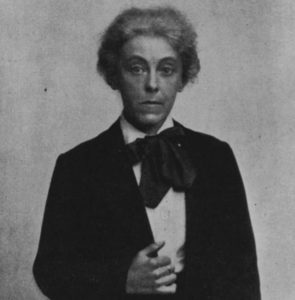
Charlotte Mew is buried with her sister Anne in Hampstead Cemetery, West Hampstead, London. The epitaph reads, “Cast Down the Seed of Weeping and Attend.” The phrase is from The Divine Comedy by Dante Alighieri, translated by Henry Wadsworth Longfellow, Vol. II (Purgatorio), Canto XXXI (31). Dante meets his ladylove, Beatrice, and recalls his love for her. She admonishes him.
“Cast down the seed of weeping and attend;
So shalt thou hear, how in an opposite way
My buried flesh should have directed thee.”
“Never to thee presented art or nature
Pleasure so great as the fair limbs wherein
I was enclosed, which scattered are in earth.”
The dismal reproach to follow a “higher good” instead of human love followed poor Charlotte Mew to her grave.
I wish instead to provide her and her work and art a happier ending, inspired by Psalm 126:6 –
“Those who go forth weeping,
Carrying sacks of seed
Will return with cries of joy,
Carrying their bundled sheaves.”
Almost 100 years after Charlotte Mew’s death, there are lesbians of faith who are married, enjoying the physical delights of a loving relationship, and looking forward together to the promise of salvation and eternal life.
The Farmer’s Wife, a poem by Charlotte Mew read by Tom O’Bedlam
Andy Warhol is an influential and celebrated 20th century artist and pop icon. He was gay and was raised Catholic. His faith and sexuality influenced his art. As an adult, he did attend church from time to time, especially after he was shot and almost killed in 1968 by Valerie Solanas, a writer and radical feminist.
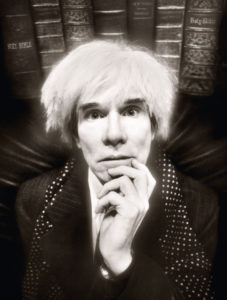 Andy Warhol with Bibles “Revelation” an exhibit at the Brooklyn Museum from November 19, 2021 to June 19, 2022, features Warhol artworks that are infused with both strains, often harmoniously and deeply revealing. The show was developed by the Andy Warhol Museum’s chief curator, Jose Carlos Diaz and curated at the Brooklyn Museum by Carmen Hermo.
Some of the show’s highlights include Warhol’s two gigantic versions of “The Last Supper” in pink and yellow; and a fusion of the face of Christ, an advertising tagline, and a shirtless young man; and a shot-up, scarred Warhol reminiscent of Christ’s wounds or a martyred St. Sebastian.
Much of Catholic dogma, art and religious expression is focused on the body. The sacrament of the Eucharist—eating and drinking Christ’s body—can have sexual overtones. Human figures in Catholic art history are often beautiful men, some in sexually suggestive poses. These influences went into Warhol’s formation as an artist and as a man, and he combined them with the pop arts trends of the day. Catholicism has inspired generations of homosexual artists through its sensual and sexually charged imagery. 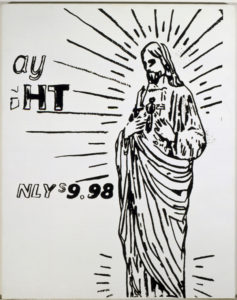

Elizabeth Etchingham and Agnes Oxenbridge were born in 1420s England. They may have met one another as girls or as teenagers. We cannot know for certainty the nature of their relationship, but the evidence in the brass memorial points to an intense, enduring, affectionate bond.
Elizabeth Etchingham was in her mid-twenties when she died on December 3, 1452. Agnes Oxenbridge died almost three decades later on August 4, 1480. She was in her mid-fifties.
Elizabeth and Agnes have a joint memorial brass on the floor of the side aisle of the Assumption of Blessed Mary and St. Nicholas Church at Etchingham. The brass is in front of the monument to Etchingham’s ancestors.
Their memorial brass was designed in the style of married couples with one interesting detail: the women are shown facing each other and looking into each other’s eyes. Elizabeth’s head is lifted up slightly to gaze at the taller figure of Agnes, whose head is bowed slightly. Generally, married couples in that era were shown looking straight ahead. Agnes and Elizabeth appear to be in motion towards each other, with their skirts spread backwards and their bodies angled forward. The two women were dressed identically.
The difference in size and hair styles of the two women most likely reflects their age difference at death. Loose, flowing hair was associated with young women; Agnes’ pinned up hair is seen on mature women. The lack of a head covering on either woman indicates that they were unmarried.
The women must have expressed a desire to be buried together which the families honored. Agnes may have directed the design of the memorial brass. The intimate gaze of the two women evident as they move toward one another. The space between them was ended by death.
 John Wojtowicz “I’m a Catholic and I don’t want to hurt anybody. Understand!” yelled Sonny Wortzik, the bank robber played by Al Pacino in the memorable 1975 movie, Dog Day Afternoon. Pacino’s character was based on John Mojtowicz, 27, who along with 18-year-old Salvatore Naturile, and Robert Westenberg, attempted to rob a Chase Manhattan branch in Gravesend, Brooklyn on August 22, 1972. Westenberg fled when he saw a police car. All three men were gay. The night before the robbery they all had sex together at the Golden Nugget Motel.
In the movie, the main reason for the heist was to get money to pay for a male-to-female sex change operation for John Wojtowicz’s wife. That may have been part of Wojtowicz’s stated reason, but was it the whole truth? According to Liz Eden (born Ernest Aron), Wojtowicz’s transgender wife, Wojtowicz owed the Gambino family money. Some of that money went to pay for their December 1971 wedding, where they were married by a Roman Catholic priest. Liz Eden wore a wedding gown; John Wojtowicz his Army uniform and medals from the Vietnam war.
According to the FBI, Wojtowicz met Naturile a month prior to the robbery at a gay bar called Danny’s, located on Seventh Avenue South in the Village. Naturile agreed to participate to get money to rescue his two sisters from foster care. The guns used in the robbery supposedly came from Mike Umbers, 37, a Gambino family associate who ran a club, bar and bookstore in the West Village. Umbers fronted several gay bars, callboy rings and pornography operations for the Genovese and Gambino organized crime families. Wojtowicz was friendly with Umbers, much to the chagrin of his fellow Gay Activist Alliance (GAA) members. Wojtowicz was known as “Littlejohn Basso” (Basso was his mother’s maiden name) at GAA.
 Sal Naturile On August 26, 1972, this article about Wojtowicz’s Brooklyn heist appeared in the New York Times:
“An acquaintance of John Wojtowicz—who has been charged with robbing a Chase Manhattan branch in Brooklyn last Tuesday and holding nine persons hostage—reportedly told the Federal Bureau of Investigation yesterday that an underworld figure supplied the guns used by Wojtowicz and two accomplices in the holdup.” “The acquaintance, Gary Badger, was questioned by F.B.I. agents yesterday afternoon, but the bureau would not comment. A friend of Mr. Badger, however, said that he told the agents that five men, including Wojtowicz, began planning the robbery last April, but that two of the men later bowed out. Wojtowicz was pressed to carry out the robbery by the underworld figure, who owns Greenwich Village bars and is involved in pornography, Mr. Badger reportedly told the agents. Mr. Wojtowicz owed the gangster money, he said.” Arthur Bell, a respected Village Voice columnist and investigative reporter, interviewed Badger, who showed up at a GAA meeting to make a plea for money to help bury his friend, Sal Naturile.
Arthur Bell knew Wojtowicz through GAA meetings and dances. He interviewed Wojtowicz and published an article about the robbery in the August 31, 1972 edition of the Village Voice, “Littlejohn and The Mob, Saga of a Heist.” Wojtowicz described how he met a middle-aged Chase Manhattan bank executive at Danny’s. The executive told him how he could rob the branch of $150,000 to $200,000. The money in the bank’s safe was picked up early; so instead of the big payday only $29,000 was on hand.
Bell also knew Mike Umbers, and interviewed him in 1971, a year before the robbery. The article, “Mike Umbers: Christopher’s Emperor,” described his start in the sex business; first as a pimp for high-class call girls and brothels, and then catering to gay men. Umbers had his run-ins with police and other crime families. According to the article, “Corruption, Before and After Stonewall,” Mike Umber’s Christopher’s End club was trashed by police. It was possible that police destroyed the interior with hammers and axes because Umbers wasn’t paying them off; or, the attack was ordered by Al Moss, also known as Abe Moss, who ran some gay bars for the Gallo crime family in the West Village.
 Mike Umbers (second from right) in front of Christopher’s End I was interested to read that Al Moss had a nephew named “Red” who paid the police $2,000 a month to protect The Barn, an after-hours club on Hudson Street. “Red” may be a reference to Red Mahoney, a long-time associate of Ed Murphy, who had his own checkered past as a gay blackmailer and gay activist. Mahoney worked with Murphy when he was alive and took over running the Christopher Street Festival after Ed died in 1989. Mahoney ran the Festival until 1992, when he became ill and stepped down. Mahony was a short, grumpy guy with dark red hair. He didn’t have Ed Murphy’s gregarious nature or command the same respect.
The vast web of connections between the mob (Genovese, Gambino, Gallo crime families), their associates (Murphy, Mahoney, NYPD), front men (Umbers), expendables (Wojtowicz, gay hustlers) and gay clubs and bars before and after Stonewall continues to amaze me. The connections were essential to their multi-million dollar businesses of bars, clubs, pornography, prostitution and blackmail.
Was the middle-aged Chase Manhattan executive who tipped off Umbers and Wojtowicz being blackmailed?
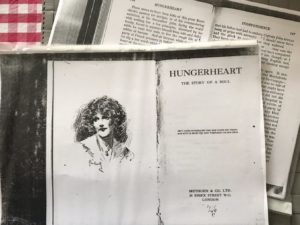
Hungerheart is a lesbian novel written by British author Christabel Marshall under her adopted male name, Christopher St. John. The book was published in 1915 in London by Methuen & Co. The novel is a first-person account of Joanna, “John” Montolivet that follows her search for love and passion. At one point she lives with Sally, a young actress, and they are “happy as a newly married pair, perhaps happier…” Sally decides to marry a man, and Joanna/John finds solace in the arms and bodies of stormy and dramatic women. Eventually she heads for quieter shores, and coverts to Catholicism. Her “friendship” with a young nun fulfills her heart’s hunger. “There are things that can be lived, but not chronicled, and our friendship is one of them,” Joanna/John describes. “Who in the world could understand our moments of union? Who in the cloister either? But they are understood in heaven…Thy love for me is wonderful, passing the love of men.”
Hungerheart never achieved the fame of another book written a decade later by another Catholic lesbian—Radclyffe Hall’s, The Well of Loneliness. Only a few copies of Hungerheart survive in research libraries. For some odd reason, it was not tagged with a homosexual or degenerate label but cataloged as a work about “Catholic spirituality.”
 Christabel Marshall The author’s book embodied her voracious love life. Christine Gertrude Marshall a.k.a. Christopher Marie St. John (1871-1960) was an English suffragette, a playwright and writer. After college, Marshall served as secretary to Lady Randolph Churchill and actress Dame Ellen Terry. Marshall became romantically involved with Dame Ellen’s daughter, Edith (Edy) Craig (1869-1947). The two women began living together in 1899. Marshall attempted suicide when Craig accepted a marriage proposal from composer Martin Shaw in 1903. Edith Craig was an actress, director, producer and costume designer.
In 1912 Christabel Marshall converted to Catholicism and took the name, St. John out of affinity with St. John the Baptist. Her friend, Claire Atwood, converted around the same time. Atwood gave Una Troubridge and Radclyffe Hall, another Catholic couple and close friends, a relic of the true cross acquired by her ancestors from a pope. Una put it with candles and flowers in a shrine in her bedroom.
In 1916, artist Claire (Tony) Atwood (1866-1962) moved in with Craig and Marshall. Their menage a trois lasted until Craig’s death in 1947. Una Troubridge used to call them, “Edy and the boys.” They often wore men’s attire to match their male names. “Miss Craig,” wrote Virginia Woolf in her diary, “is a rosy, ruddy ‘personage’ in white waistcoat, with black bow & gold chain loosely knotted.” Marshall wrote rhat the three women “achieved independence within their intimate relationships…working respectively in theatre, art, and literature, and drew creative inspiration and support from one another.”
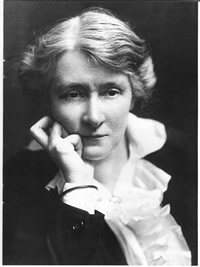 Edith Craig In 1932, when she was sixty-one, Marshall fell madly in love with Vita Sackville-West, a member of the Bloomsbury Group and a successful poet and writer. Their affair continued for several years and caused huge fights between Marshall and Craig. Atwood unsuccessfully tried to serve as a peacemaker.
In 1935, under her male name, Christopher St. John, Marshall wrote a biography of a distinguished physician, Dr. Christine Murrell, the first female member of the British Medical Association’s Central Council. Titled, “Christine Murrell, M.D., Her Life and Work,” St. John/Marshall wrote the dedication to both of Murrell’s lovers: Honor Bone, M. D. and Marie Lawson, a printer, editor, and tax resister. Like St. John/Marshall, Murrell had a threesome household.
Christabel Marshall/Christopher St. John died in 1960. She is buried next to Claire Atwood at St. John the Baptist’s Church, Small Hythe, England. This is the church where Dame Ellen Terry worshipped and where her funeral Mass was held in 1928. Edith Craig’s ashes were supposed to be buried there as well, but by the time of Marshall’s and Atwood’s deaths, they had been lost. A memorial was placed in the cemetery instead.
Why did so many Anglican clerics, creatives and/or socially prominent gays and lesbians convert to Catholicism in the Victorian and Edwardian eras? The Catholic Church has always been opposed to homosexual sex; but it also has been tolerant of gay sex among its members, including priests, the hierarchy and religious, as long as they were discreet and parroted official teaching in public. At that time, being Catholic was a little naughty, not socially acceptable, and showed a streak of rebellion and independence. Creatives were drawn to the sensuousness, the pageantry, and the mysteries in Catholicism. Catholicism emphasizes the body—the body of Christ in our mouth, the bodies of saints who give themselves up to pain and ecstasy, the homoerotic images found everywhere there are Catholic artists and cathedrals. For women, Catholicism offers many role models of women who lived full and fulfilling lives—without men.
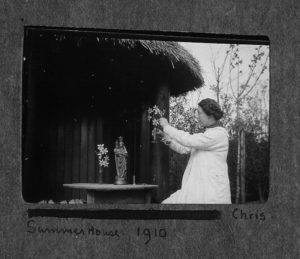 Christopher St. John’s Shrine
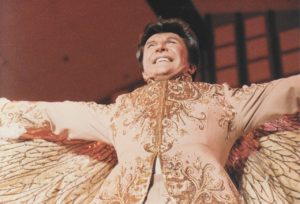
In 1959, the flamboyant entertainer, Liberace, sued the Daily Mirror, a British paper, for insinuating that he was a homosexual. Daily Mirror columnist, William Connor, writing under the pen name, Cassandra, described Liberace as “…the summit of sex – the pinnacle of masculine, feminine and neuter. Everything that he, she, and it can ever want…a deadly, winking, sniggering, snuggling, chromium-plated, scent-impregnated, luminous, quivering, giggling, fruit-flavoured, mincing, ice-covered heap of mother love.” In court, Liberace denied being a homosexual (“I’m against the practice because it offends convention and it offends society”) and sued for libel. He won and was awarded £ 8,000. Liberace skipped off and coined his famous saying, “I cried all the way to the bank.”
To the day of his death from AIDS in 1987, Liberace denied he was gay. He belonged to the generation of show business homosexuals (Rock Hudson, Tab Hunter, Anthony Perkins, Barbara Stanwyck, Katharine Hepburn, Agnes Moorehead..) who believed that their personal lives were private, and certainly not political. Liberace’s Catholic upbringing may have had a hand in shaping his attitudes, but so did social mores of post-World War II America. Actors and entertainers’ contracts included morals clauses. If they were exposed as homosexuals, their careers were over and they were economically ruined. “I don’t think entertainers should publicly air their sexual or political tastes,” said Liberace. “What they do in the privacy of their home or bed is nobody’s business.”
He encapsulates the institutional Catholic philosophy of homosexuality for both clergy and laity: flirt, enjoy romance, have sex with tricks and lovers, but always deny your homosexuality and condemn it in others. Above all, say nothing political. This practice was most recently on display with the outing and resignation of Monsignor Jeffrey Burrill, the general secretary of the U.S. Conference for Catholic Bishops in July 2021. Burrill was exposed through his cellphone data which indicated that he had repeatedly used his Grindr app to find men and had visited gay bars and bathhouses. 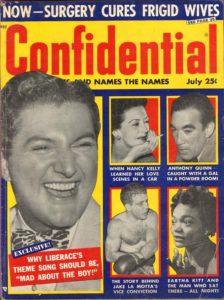
Wladziu Valentino Liberace (May 16, 1919-February 4, 1987) was the highest paid entertainer in the world at the height of his fame in the 1950s-1970s. Born in Wisconsin to parents of Italian and Polish origin, “Mr. Showmanship” was known for his excesses on the stage and off. After watching a movie about Frederic Chopin in 1945, Liberace made the candelabra his symbol, always on his piano during a performance. But he was best known for his elaborate, sensational costumes. There was a “King Neptune” costume; a red, white, and blue hot pants outfit; one of his favorites called the “lasagna” costume, which featured a cape that fanned out when he spun around. Two of the most “over the top” capes were designed by Liberace’s dear friend and furrier, Anna Nateece. One was white fox fur with a train 12 feet wide and 16 feet long. The second was made from 500 mink skins and weighed over 150 pounds. They were both trimmed with rhinestones.
His homes exhibited the same excess. Mirrored walls, a marble quarry’s worth of floors, colonnades and fixtures, a casino with a slot machine jackpot of three candelabras, a canopied bed with an ermine spread. On the bedroom ceiling was a reproduction of the Sistine Chapel with Liberace’s face among the cherubs. Liberace loved dogs and had about 20 of them between his Las Vegas and Palm Springs houses. They must have had a hard time skidding and slipping on the shiny marble floors.
Liberace was camp before the word came into wide-spread use. When the word first appeared in the early 20th century, it denoted “ostentatious, exaggerated, affected, theatrical, effeminate or homosexual behavior.” In the 1966 Batman television series with Adam West as Batman and Burt Ward is the Boy Wonder—the campiest show ever–Liberace played a dual role as a concert pianist, Chandell, and his gangster-like twin, Harry, who was extorting Chandell into a life of crime as “Fingers” in the episodes “The Devil’s Fingers” and “The Dead Ringers.” According to Joel Eisner’s The Official Batman Batbook,” they were the highest rated of all the show’s episodes. The show had huge homosexual overtones as well. Burt Ward speculated in his book, My Life in Tights, that Batman and Robin could have been lovers. What drew fans to Liberace was not only his flamboyant and outrageous costumes and act, but his warm, gracious, polite, and down-to-earth way of speaking to fans and his audience from the stage or television. “I talked to my viewers as if they were my friends, my next-door neighbors,” he said.
Liberace gave a hint to one of his connections to Catholicism when he once remarked on religion: “There will always be the need for people to worship,” he said, “whether it’s religion, an entertainer or a movie star. I’ve always felt close to religion because it’s a form of show business.” The late Bishop Fulton J. Sheen, Mother Angelica and even Bishop Robert Baron of Word on Fire could appreciate that statement. But when it comes to costumes, Liberace undoubtedly would feel closest to Cardinal Raymond Burke with his 20-foot train of watered silk, scarlet gloves, and jeweled red hats.
In November 1963, Liberace almost died from kidney failure during a performance in Monroeville, a town right outside of Pittsburgh, PA. The day before he had been cleaning his costumes in an unventilated room with a toxic cleaning solvent. The deadly fumes nearly killed him. He collapsed onstage and was rushed to St. Francis Hospital. Liberace was hooked up to a new device – a dialysis machine – and given a 20% chance of surviving. His doctors told him to get his affairs in order. “I took it very philosophically,” Liberace said. “I had led a good life, made a lot of people happy, and I had no regrets.” He described one experience during his hospital stay in his autobiography, The Wonderful Private World of Liberace that was a turning point in his recovery: “A very young and lovely nun wearing a white habit came to see me late one night, when I was very near death. She said that she was going to pray to Saint Anthony for me, and that he would make me well. The very next day, I began to get well. I described the nun to Mother Superior at the hospital and asked who she was. The Mother Superior said, ‘There are no nuns in the hospital who wear white habits.’” Dialysis took off after it saved Liberace’s life, and St. Francis Hospital gained a new, life-long patron. Liberace raised money for the hospital, financed a new intensive-care ward, and made sure that the sisters had tickets whenever he performed in Pittsburgh. 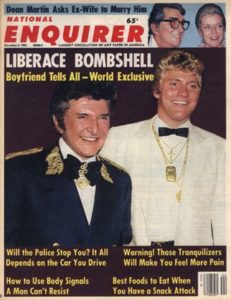
Soon after his Monroeville hospital stay Liberace was snared by sexual blackmailers. “The Chickens and the Bulls” extortion scheme is forgotten now, but it was a scandal in the mid-1960s. In a New York Times article published on March 3, 1966 – “Nationwide Ring Preying on Prominent Deviates,” a celebrity believed to be Liberace is described. “A TV celebrity, a twinkling star who has millions of female fans all over the world, refused to take the witness stand. However, he did tell investigators that he had paid blackmailers more than $20,000. “I can afford to lose the money,” he said, adding: “I hope they die of cancer.”
That incident didn’t slow Liberace down. He had affairs, tricks, and romances, taking in live-in lovers, usually blond, blue-eyed young men with strong physiques. One of his lovers, Scott Thorson, said Liberace’s first sexual encounter was with a Green Bay Packer football player. Thorson is also the source for a story of an affair between Liberace and Rock Hudson.
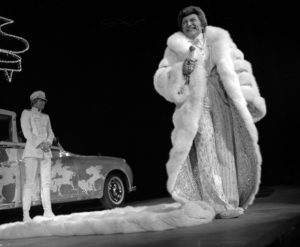 4/17/79
Liberace show at the Las Vegas Hilton Scott Thorson, 62, met Liberace in 1976 when he was 17. When he was 18, Liberace hired him to act as his personal friend and companion. He also incorporated Thorson into his Las Vegas performances. Thorson would don a chauffeur’s uniform covered in rhinestones and drive Liberace on stage in a Rolls Royce. The five-year relationship ended in 1982, when Liberace had members of his retinue forcibly eject Thorson from his Los Angeles penthouse. Thorson admitted that at least part of the reason for the breakup was his drug addiction.
But Scott Thorson wasn’t finished with Liberace. Shortly after he was dismissed/dumped, Thorson filed a $113 million dollar lawsuit against Liberace, the first same-sex palimony suit in U.S. history. Liberace continued to deny that he was a homosexual and insisted that Thorson was never his lover. The case was settled out of court in 1986, with Thorson receiving $75,000 in cash, three cars and three pet dogs. Thorson sniped that Liberace was a “boring guy” in real life, and mostly preferred to spend his leisure time cooking, decorating, and playing with his dogs.
In August 1985, Liberace was secretly diagnosed as HIV positive. Cary James Wyman, his alleged lover of seven years, was also HIV positive and died in 1987 at the age of 33. Another alleged lover, Chris Adler, came forward after Liberace’s death and claimed that Liberace had infected him with HIV. Adler died in 1990 at age 30. Besides his long-term manager, Seymour Heller, private physician, Dr. Ronald Daniels, and a few family members and close friends, Liberace kept his HIV positive status a secret until the day he died and did not seek any medical treatment for it. Urged by a former boyfriend to admit that he was sick, he refused, saying “I don’t want to be remembered as an old queen who died of AIDS.”
Liberace died on February 4, 1987 at The Cloisters, his home in Palm Springs, California. He was 67 years old. His death was initially attributed to anemia from a watermelon diet, and emphysema and heart disease from chain smoking. However, the Riverside County coroner performed an autopsy and while emphysema and coronary artery disease were present, the real cause was pneumonia due to complications from AIDS. Liberace received the Last Rites a few days before he died. “He had the rosary wrapped around his right hand. There was no jewelry. The rosary beads were his jewelry,” said his publicist, Jamie James.
Within hours of his death, his body was taken from his home directly to Forest Lawn Memorial Park in Los Angeles. He was buried on February 7th and is entombed with his mother and brother, George. The marble façade has the very enigmatic epitaph: “Sheltered Love.” A memorial service for Liberace had been held the day before at Our Lady of Solitude Church in Palm Springs. Two stars were present – a neighbor, actress Charlene Tilton from the television series, Dallas, and Kirk Douglas. There was a second memorial service at St. Anne’s Church in Las Vegas on February 12th, with Debbie Reynolds, Donald O’Connor, Robert Goulet, Rip Taylor and Sonny King in attendance. In contrast to his glittery public life, Liberace’s burial was private, and his memorial services were quiet and low key. 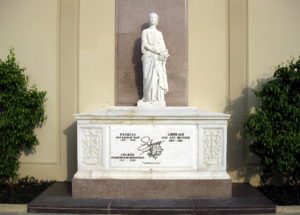
I agree with Liberace that not everyone is called—or should—make their private life public. Like most gays and lesbians of his era, he lied about or denied his homosexuality. That is an unadmirable trait, but understandable in the context of his time, his entertainment career and his faith. Except for a despised handful, there were no gay rights supporters, no “out” showbusiness people, religious, public figures, or academics until deaths from AIDS began in the 1980s and the gay and lesbian rights movement began to pick up momentum. His longtime publicist, Jamie James, once said, “He had this image, but he was no sissy. You have to be a pretty strong, brave person to wear what he wore and act like he did during those days. You had to have guts, believe me.”
Reading:
Liberace Cooks! – A Cookbook by Liberace. 1970
Liberace: An Autobiography by Liberace. 1973
The Wonderful Private World of Liberace by Liberace. 1986
Behind the Candelabra: My Life with Liberace by Scott Thorson. 1988.
Liberace: The True Story by Bob Thomas. 1988
Liberace: An American Boy by Darden Asbury Pyron. 2000
Rocking the Closet: How Little Richard, Johnnie Ray, Liberace and Johnny Mathis Queered Pop Music by Vincent L. Stephens. 2019
.
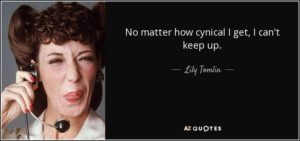
Monsignor Jeffrey Burrill, the former general secretary of the U.S. Conference of Catholic Bishops, used Grindr, a gay male dating and sex hookup app, at his office, home and while on trips for the USCCB. In his position at the USCCB, Burrill played a key role in coordinating national and diocesan responses to sex abuse and coercion scandals. He and several senior USCCB officials met with Pope Francis Oct. 8, 2018 to discuss how the conference was responding to ecclesiastical scandals related to sexual misconduct, duplicity, and clerical cover-ups.
On June 20, 2018, the day the McCarrick sex scandal became public, Burrill’s cell phone emitted hookup app signals at the USCCB staff residence, and from a street in a residential Washington neighborhood! He traveled to Las Vegas a day or two later. On June 22, the mobile device associated with Burrill emitted signals from Entourage, which bills itself as Las Vegas’ “gay bathhouse.”
Burrill resigned on July 20, 2021, after The Pillar, a Catholic investigative journalism site, revealed the extent of his almost daily Grindr usage.
“If someone who has made the promise of celibacy or a vow of chastity has a dating app on his or her phone, that is asking for trouble,” said Cardinal Joseph W. Tobin of Newark, NJ at a Zoom panel organized by Georgetown University.
The Pillar tried to reveal a few more Grindr exposés of priests in the Newark archdiocese and in the Vatican but they were squelched.
Less than a month later, another clerical higher up made the news: “Pope replaces Bishop After Video of Him Masturbating on Zoom Call with Another Man Leaks on Social Media.” Tome Ferreira de Silva, the bishop of the Diocese of Sao Jose do Rio Preto in Brazil, had previously been accused of having an affair with a young man working as his driver and ignoring credible allegations of local priests having sex with teenagers. The video was released to a local TV station. A still of the video shows the bishop playing with himself. Several previous Vatican investigations of the bishop came to nothing.
Monsignor Burrill slunk off without saying anything. Bishop Ferreira de Silva publicly groused about his exposure.
When I read these stories and exposés a favorite saying from Lily Tomlin (another lesbian!) springs to mind:
“No matter how cynical I get I can’t keep up!”
|












